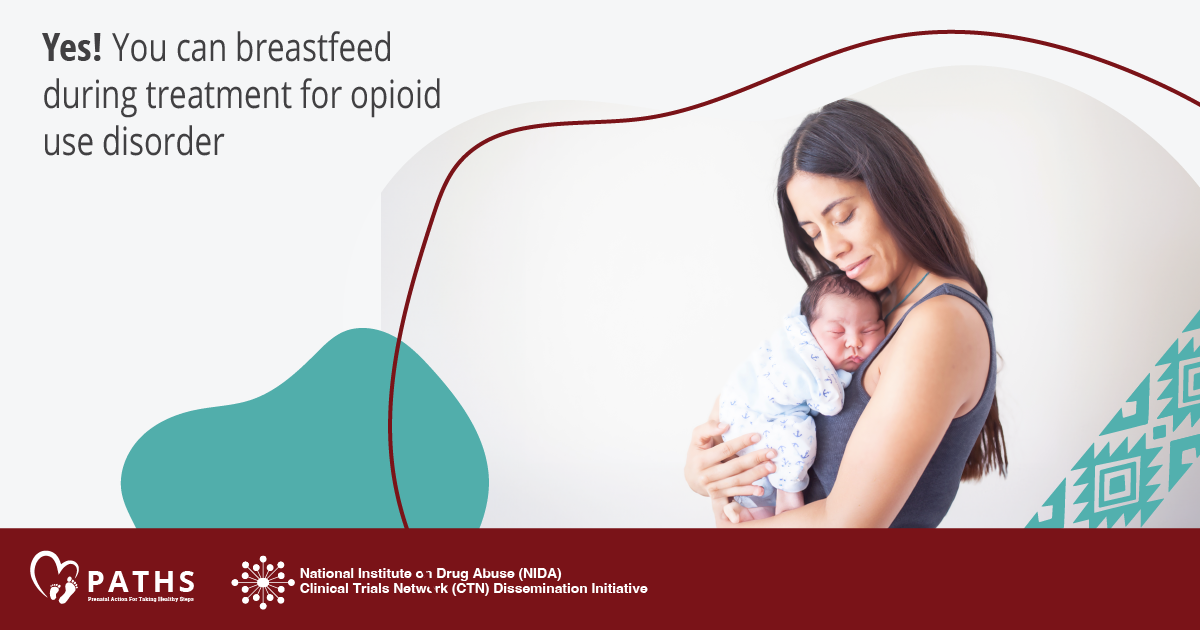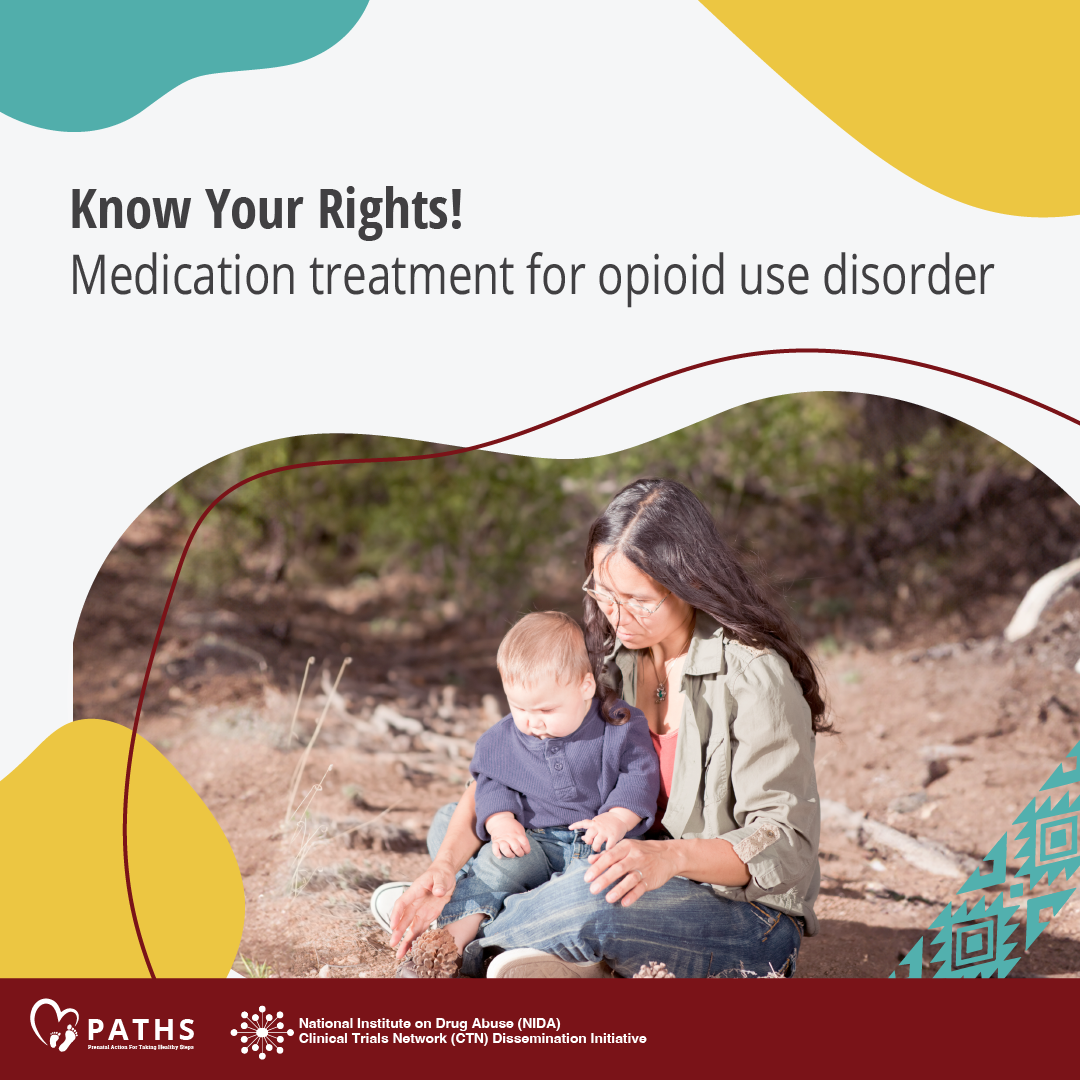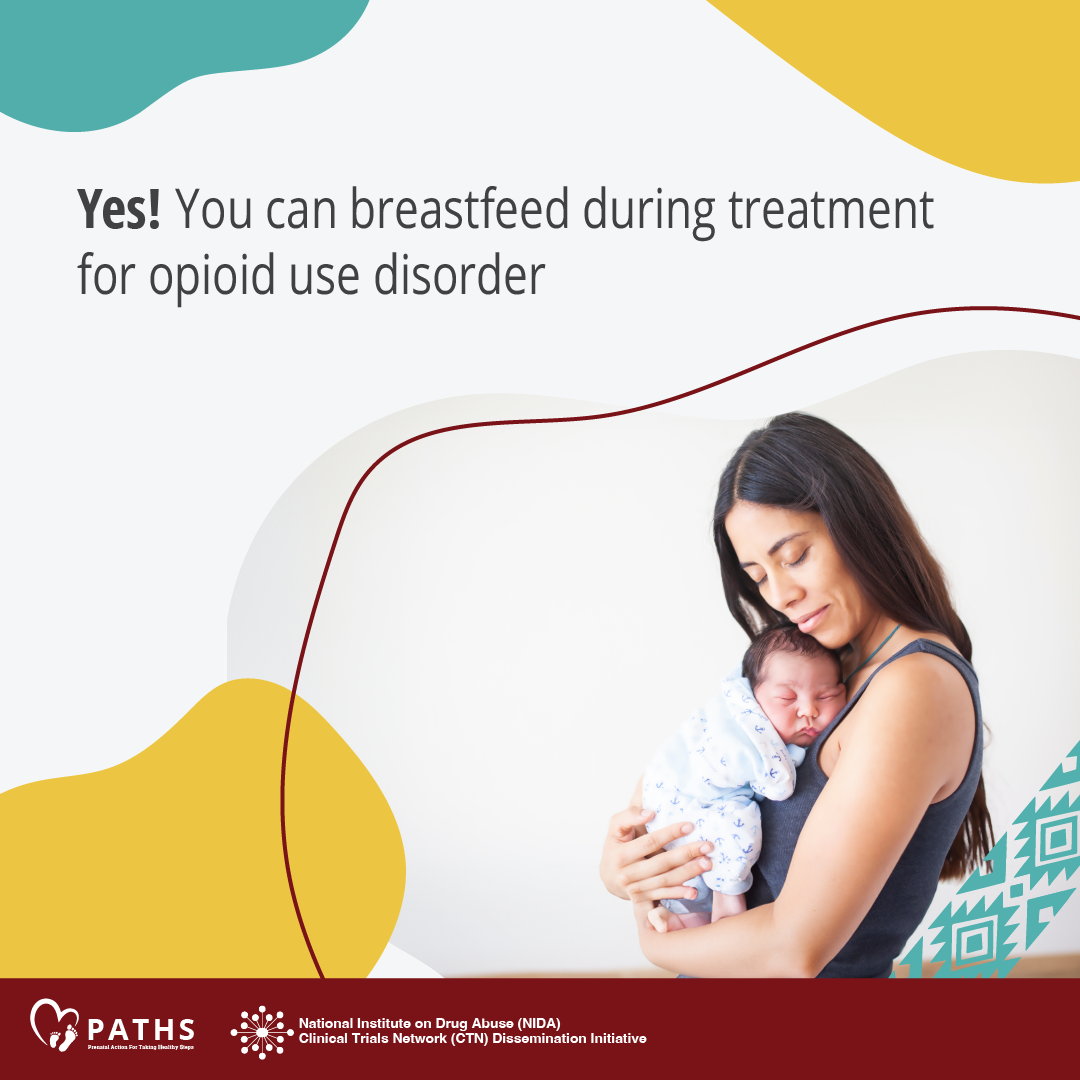Prenatal Action for Taking Healthy Steps (PATHS) Toolkit – Resources for American Indian/Alaska Native Communities
The PATHS toolkit offers culturally-informed, evidence-based educational resources about the use of medication to treat opioid use disorder (OUD) during and after pregnancy.
Resources include videos, discussion guides, fact sheets, flyers, posters, and social media messaging. Links on this page all open in a separate tab.
This page features the materials from the toolkit that have been culturally tailored for American Indian and Alaska Native communities.
Learn more about how these materials were developed: clinician version | non-clinician version.
For other materials from this toolkit, in standard English and Spanish, return to the main PATHS Toolkit page.
PATHS Introductory Video
Note: This video is the same for both the Standard English and AIAN versions of the toolkit. Start discussions about opioid use disorder (OUD) and pregnancy with this video featuring Erika, a mother in recovery with OUD, who shares her personal journey of managing OUD during pregnancy with medication. Erika highlights the importance of staying in treatment, debunks myths about medication treatment for OUD, and advocates for the rights of pregnant people with OUD to receive appropriate medical care without discrimination. She shares a message of hope that a healthy pregnancy with OUD is possible with education and supportive health care.
Printable Resource Downloads
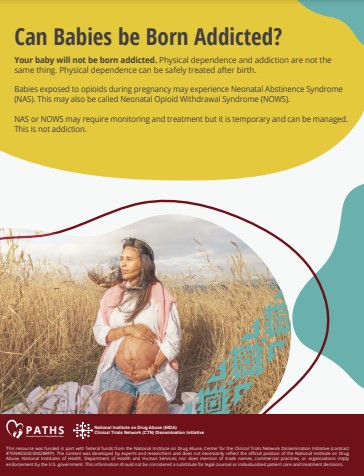
Flyers
Share these printable flyers with anyone who has questions about using medications for opioid use disorder in pregnancy or post to bulletin boards, treatment rooms–even restrooms. They answer common questions about opioid use disorder (OUD) and pregnancy in plain language.
- Can Babies Be Born Addicted?
- Will My Baby Experience Withdrawal?
- Can I Take Buprenorphine or Methadone (MOUD) While Pregnant?

Discussion Guide
Help people with opioid use disorder navigate pregnancy with valuable information and credible resources created for recovery discussions.
This printable guide is formatted for use with groups, but is also useful when discussing opioid use disorder in pregnancy with individuals. The guide helps you plan and initiate discussions with people with opioid use disorder and their families about:
- Stigma and misconceptions about opioid use disorder treatment during pregnancy
- Americans with Disabilities Act (ADA) rights to medication for opioid use disorder (MOUD) treatment
- MOUD treatment during pregnancy
- Neonatal opioid withdrawal syndrome (NOWS) and neonatal abstinence syndrome (NAS)
- Breastfeeding during MOUD treatment
- Assessing and advocating for person-centered health care
- Federal and state resources available for pregnant people with OUD
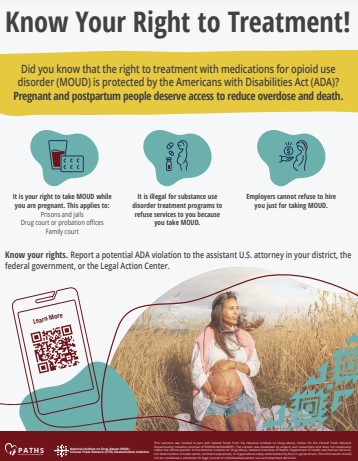
Poster
Know Your Right to Treatment
Help pregnant people with opioid use disorder (OUD) understand their right to treatment with medications for opioid use disorder (MOUD) through the Americans with Disabilities Act (ADA) and how to report a potential ADA violation.

Factsheet
Treating Opioid Use Disorder (OUD) During Pregnancy
Packed with information, this printable resource discusses the treatment of opioid use disorder (OUD) during pregnancy, focusing on recovery, preparing for the baby’s arrival, and rights to treatment for OUD.
Social Media Downloads – Facebook
To download images, right-click on the individual image and select save. Download the headline document for suggested messages to use with each image.
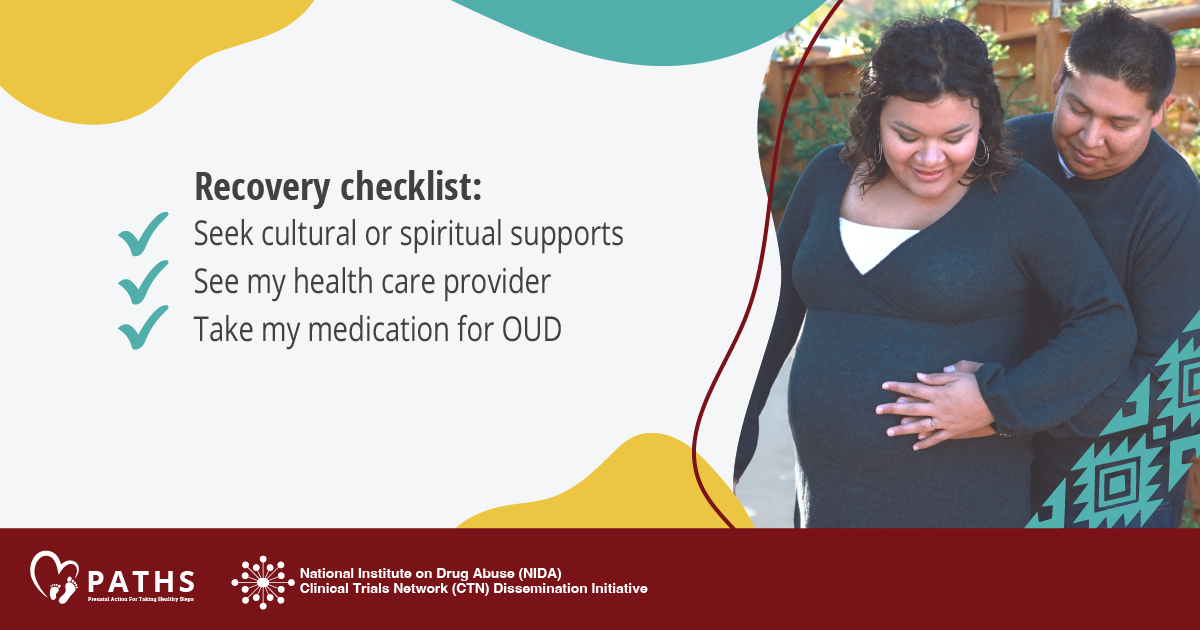
Facebook: Headline image 1
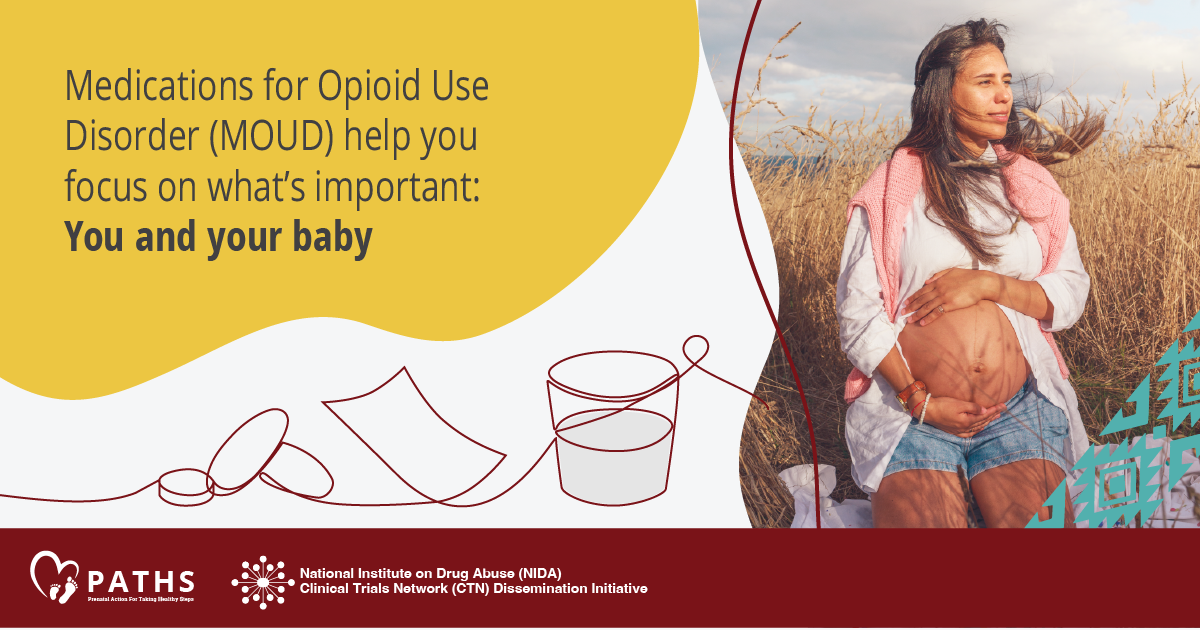
Facebook: Headline image 2

Facebook: Headline image 3
Social Media Downloads – Instagram
To download images, right-click on the individual image and select save. Download the headline document for suggested messages to use with each image.

Instagram: Headline image 1

Instagram: Headline image 2

Instagram: Headline image 3
Reels – Facebook and Instagram
Note: These videos is the same for the AIAN and Standard English versions of the toolkit. Click to view each video on YouTube. YouTube links can be shared on Facebook or Instagram, or you can use a YouTube downloader to save the MP4 video files and upload those directly to each platform. Click the button below to find instructions for both approaches.
Additional Resources
- Taking Care of You and Baby Toolkit (Incarcerated Women’s Health)
- Mothering and Opioids: Addressing Stigma – Acting Collaboratively Toolkit (Centre of Excellence for Women’s Health)
- Pregnancy and Substance Use: A Harm Reduction Toolkit (National Harm Reduction Coalition)
- Opioid Use Disorder and Pregnancy: Taking Helpful Steps for a Healthy Pregnancy (Substance Abuse and Mental Health Services Administration [SAMHSA])
- Know Your Rights: Rights for Individuals on Medication-Assisted Treatment (SAMHSA)
- SAMHSA’s National Helpline
- SAMHSA’s Opioid Treatment Program Directory
This resource was funded in part with federal funds from the National Institute on Drug Abuse, Center for the Clinical Trials Network Dissemination Initiative (contract #75N95020C00028RFP). The content was developed by experts and researchers and does not necessarily reflect the official position of the National Institute on Drug Abuse, National Institutes of Health, Department of Health and Human Services; nor does mention of trade names, commercial practices, or organizations imply endorsement by the U.S. government. This information should not be considered a substitute for legal counsel or individualized patient care and treatment decisions.

